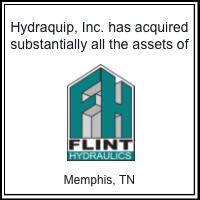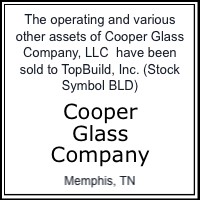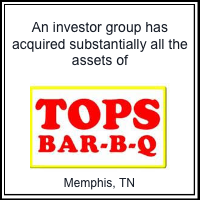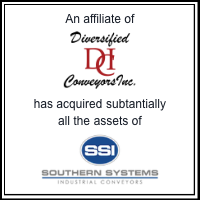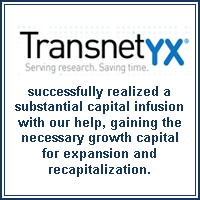Adjusted EBITDA Formula: 7 Mistakes You’re Making (and How to Fix Them)

Are you confident that your Adjusted EBITDA calculation accurately reflects your business’s true operating performance? If you’re like most business owners, there’s a good chance you’re making at least one critical error that could be costing you millions in valuation.
Adjusted EBITDA isn’t just another financial metric, it’s often the foundation for how buyers, investors, and lenders evaluate your company’s worth. Get it wrong, and you might be leaving serious money on the table. Get it right, and you’ll have a powerful tool for demonstrating your business’s real potential.
After years of working with business owners on valuations and transactions, we’ve seen the same mistakes pop up again and again. Here are the seven most common Adjusted EBITDA errors, and exactly how to fix them.
Why Adjusted EBITDA Matters More Than You Think
Before we dive into the mistakes, let’s get crystal clear on what we’re dealing with. The basic Adjusted EBITDA formula looks like this:
Adjusted EBITDA = Net Income + Interest + Taxes + Depreciation + Amortization +/- Adjustments
That last part, the adjustments, is where the magic happens and where most people mess up. The goal is to show what your business would earn under normal, ongoing operations by removing one-time events, non-cash charges, and other irregularities.
When done correctly, Adjusted EBITDA gives buyers a cleaner picture of your cash-generating ability. When done incorrectly? You either inflate your numbers (which buyers will catch and penalize you for) or undervalue your own business.

Mistake #1: Adding Back Section 179 Expenses
Some business owners treat Section 179 tax deductions as legitimate EBITDA add-backs, but here’s the problem: Section 179 is purely a tax benefit that never flows through your profit and loss statement (on your reviewed or audited statements).
The Fix: If it’s not on your P&L as an expense, don’t add it back to EBITDA. Before making any adjustment, ask yourself: “Does this item actually appear as an expense on my income statement?” If the answer is no, it doesn’t belong in your Adjusted EBITDA calculation.
Mistake #2: Getting Owner Compensation Wrong
Here’s a scenario we see all the time: A business owner pays himself $200,000 annually, then adds back the entire amount as an “adjustment” because “the new owner won’t need to pay me.”
That’s only half right. While it’s true that a new owner won’t pay the current owner, they will need to hire someone to do the work, and that someone will need to be paid market rate.
The Fix: Only add back the excess compensation above what you’d pay a replacement manager. If you’re paying yourself $200,000 but could hire a competent manager for $120,000, your legitimate add-back is $80,000, not the full $200,000.
Mistake #3: Adding Back Balance Sheet Items
This mistake can completely destroy your credibility with sophisticated buyers. I’ve seen business owners try to add back financed car payments, owner distributions, and equipment purchases that were capitalized rather than expensed.
Here’s the thing: if an item only hits your balance sheet and never flows through your income statement as an expense, it has zero impact on EBITDA.
The Fix: Use this simple test for every potential add-back: Can I point to this exact dollar amount as a line item expense on my P&L? If not, it doesn’t qualify for adjustment. Your EBITDA calculation should only include items that actually reduced your reported earnings.
Mistake #4: Forgetting About Government Credits
The Employee Retention Tax Credit was a lifeline for many businesses during COVID, but it’s also created a major blind spot in EBITDA calculations. These credits artificially inflated earnings during 2020-2022, but they’re not indicative of your business’s ongoing earning power.
The Fix: Identify and remove any government subsidies, tax credits, or other artificial income enhancements from your earnings before calculating Adjusted EBITDA. A buyer wants to see what your business earns on its own merit, not with government assistance.
Mistake #5: Including Buyer Synergies
This one’s subtle but crucial. Some business owners include projected cost savings or revenue opportunities that would only exist under a specific buyer’s ownership. For example, “If Google bought us, we could eliminate our entire marketing department because they’d handle it internally.”
While those synergies might be real, they don’t belong in your Adjusted EBITDA calculation.
The Fix: Your Adjusted EBITDA should reflect your business’s standalone performance. Buyer-specific synergies are negotiating points for later in the process, not baseline assumptions in your financial metrics. Focus on what your business actually generates today, not what it might generate under different ownership.
Mistake #6: Making Unjustified or Inconsistent Adjustments
Here’s where things get dangerous. Some business owners get creative with their adjustments, adding back expenses that are actually part of normal operations or applying adjustments inconsistently across different time periods.
We’ve seen owners try to add back travel expenses (“I travel more than most CEOs would”), office rent (“We could operate from a cheaper location”), or marketing costs (“A larger company wouldn’t need to spend as much on marketing”).
The Fix: Every adjustment needs bulletproof documentation and a compelling business rationale. Ask yourself: Would a sophisticated buyer or investor accept this adjustment? If there’s any doubt, don’t include it. Consistency is key, if you adjust for something in one period, you need to apply the same logic to all periods.

Mistake #7: Not Understanding What Actually Qualifies
This is the big one, the fundamental misunderstanding that leads to all the other mistakes. Adjusted EBITDA adjustments should only include non-recurring, one-time, or truly non-operational expenses.
Legitimate adjustments typically include:
- Stock-based compensation
- One-time legal settlements
- Goodwill impairment charges
- Gains/losses from selling non-core assets
- Restructuring costs
- One-time consulting fees for major projects
What doesn’t qualify:
- Regular operating expenses
- Routine maintenance and repairs
- Normal employee turnover costs
- Seasonal fluctuations
- Competitive pressures
The Fix: Before making any adjustment, ask three questions: (1) Is this truly non-recurring? (2) Is this outside normal business operations? (3) Would this expense continue under new ownership? If you can’t answer “yes,” “yes,” and “no” respectively, skip the adjustment.
Getting It Right: Your Action Plan
Here’s how to calculate Adjusted EBITDA that will actually hold up to scrutiny:
Start with your standard EBITDA calculation. Use your audited or reviewed financial statements, not your tax returns or internal books.
Document every single adjustment. Create a spreadsheet that shows the adjustment amount, which line item it came from, and your business justification.
Apply the “skeptical buyer” test. For each adjustment, imagine explaining it to a buyer who’s looking for reasons to reduce their offer. If you can’t make a compelling case, remove it.
Be conservative rather than aggressive. It’s better to slightly understate your Adjusted EBITDA than to inflate it and lose credibility during due diligence.
Get professional help when the stakes are high. If you’re preparing for a sale, seeking investment, or applying for significant financing, have your calculations reviewed by someone who understands what buyers and lenders actually accept.
The Bottom Line
Your Adjusted EBITDA calculation is often the first impression you make on potential buyers, investors, and lenders. Get it wrong, and you’ll either undervalue your business or: worse: damage your credibility when the truth comes out during due diligence.
The good news? Now that you know these seven common mistakes, you’re already ahead of most business owners. Take the time to review your calculations, apply these fixes, and you’ll have a much stronger foundation for any future transaction or financing discussion.
Remember, the goal isn’t to maximize the number: it’s to accurately represent your business’s true earning potential. When you get that right, the valuation will take care of itself.
If you’re preparing for a potential sale or need help ensuring your financial metrics will stand up to buyer scrutiny, our team at Southard Financial has extensive experience helping business owners present their companies in the best possible light while maintaining complete accuracy and transparency.

